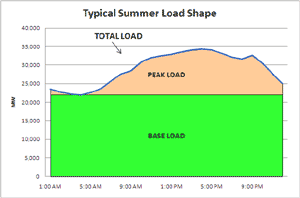 At any given moment, homes and businesses throughout California are consuming enormous amounts of electricity for everything from turning on the lights to running equipment – all of which are powered by electric generators throughout the West.
At any given moment, homes and businesses throughout California are consuming enormous amounts of electricity for everything from turning on the lights to running equipment – all of which are powered by electric generators throughout the West.
To keep electricity flowing reliably and safely, the operators of the Western transmission system must continuously balance the supply of electricity with the demand to ensure enough power is available without placing undue stresses on the transmission systems. This careful balance is achieved by “Balancing Authorities.”
What is a Balancing Authority?
A Balancing Authority is responsible for maintaining the electricity balance within its region. The Balancing Authority does this by controlling the generation and transmission of electricity throughout its own region, and between neighboring Balancing Authorities. Every hour of every day, Balancing Authorities undertake a delicate dance to ensure the generation, transmission and distribution systems are all working reliably to meet California’s energy needs.
A Balancing Authority has several ways to maintain the balance of supply and demand, from turning on or off generators, to importing or exporting excess electricity to or from their neighbors.
There are currently 38 Balancing Authorities in the Western Interconnection, which serves most of the U.S. and Canada. Why not just have one big Balancing Authority for the entire grid? When the grid was first being built, individual power companies developed their own local electricity systems that, over time, became interconnected with one another. Connections between the neighboring electricity systems improved reliability and efficiency of the whole system, while still allowing the individual power companies to keep control over serving their own customers’ needs. The development of Balancing Authorities helps to maintain the stability and safety of the entire grid because any problems, such as outages caused by fires or earthquakes, can be isolated and controlled without causing a risk to other parts of the electric grid.

Balancing Authorities in California
In California there are eight balancing authorities:
- Balancing Authority of Northern California (BANC)
- California Independent System Operator (CAISO)
- Imperial Irrigation District (IID)
- Los Angeles Department of Water and Power (LADWP)
- PacifiCorp-West
- NV Energy
- Turlock Irrigation District (TID)
- Western Area Lower Colorado (WALC)
The CAISO is the largest of the Balancing Authorities in California, covering 132,000 square miles in portions of all 58 of California’s counties and a small portion of Nevada. The CAISO operates the flow of electricity in the service territories of California’s three main investor-owned utilities (Pacific Gas & Electric, Southern California Edison and San Diego Gas & Electric) and several municipal utilities. The seven other Balancing Authorities are primarily responsible for operations within their own service territories throughout the state.
Meeting California’s Energy Needs
California’s energy needs change not only day-by-day, but hour-by-hour and even minute-by-minute. On a typical California summer day, the demand for energy is at its lowest during the early morning hours and grows throughout the day until it hits its peak in the late afternoon and early evening. During these peak hours, the demand for energy can be as much as 1 1/2 times the amount needed during off-peak hours.

To meet fluctuations in demand, Balancing Authorities utilize three types of electricity generation:
- Baseload generation includes the largest generators in the state. These generators run continuously and consist of electricity generated from nuclear, hydroelectric, geothermal, biomass, and oil and natural gas sources. Baseload generators are less expensive to operate than other generators once they are running, but require expensive or long startup and ramp down times, which makes them best suited to meet the constant baseload of electricity need.
- Peaking generation is mostly composed of natural gas generators. These generators can be ramped on and off quickly to meet the electricity needs during the peak usage hours.
- Intermittent generation, which includes solar and wind, operates only when the generation is readily available, such as when the sun is shining or the wind is blowing. Since grid operators cannot control how much of this generation is feeding electricity onto the grid at any given time, they must balance out this intermittency by controlling other baseload and/or peaking generation that is operated hourly.
To manage these different types of electric generation, Balancing Authorities use long-term planning tools such as historic load data and weather and economic forecasts to plan for how much and what kind of resources will be needed during every hour of every day. Using this plan, grid operators work in real-time as electricity usage occurs to determine which generation should be scheduled to operate, to call on the standby generation as needed, and to determine which generation isn’t needed.
